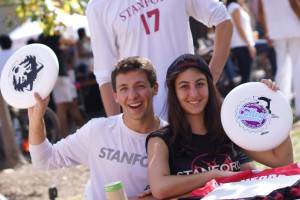
With over 650 student groups formally recognized, students looking to create a new club or organization can do so through Student Activities and Leadership (SAL). However, while SAL accepts applications for new groups at the beginning of each quarter, not all groups have an easy time getting approved. Likewise, the continued survival of a club is not always guaranteed.
The Daily took a look into what it takes to create a new student group, what options students have when creating their own organization and what it takes to retain status as an official group.
Getting a new group off the ground
At the beginning of each quarter, an application opens on SAL’s website for a group to become officially recognized as a voluntary student organization (VSO), Stanford’s term for an officially recognized student group.
In order to be considered, groups are expected to have a stated purpose and constitution, as well as designated group representatives and a statement on who is eligible for membership. Additionally, SAL’s website indicates that proposals for new groups should be of “general appeal to the student body,” with a purpose non-redundant to already existing student groups. Proposals must also contain a plan for how the group will finance and otherwise sustain itself for a period of three years.
One group that went through this process recently — at the end of last year — is the Stanford Beekeepers. Founded by Davis Wertheimer ’16, the Beekeepers now operate and maintain four beehives located on the Educational Farm with the assistance of Patrick Archie, a lecturer in the Earth Systems department.
According to Wertheimer, once student interest was generated, the written application was fairly simple. However, the club did have a few complications in getting off the ground.
“The biggest barrier was probably balancing real safety concerns with baseless bee-phobia,” he said. “Finding a good location took multiple trips to the SAL office, but they were very helpful.”
While Beekeeping was able to get safety approval and become an officially recognized club, other groups haven’t been able to satisfy the SAL requirements.
Stanford Underwater, a group that organizes scuba trips near campus, was denied approval based on liability and insurance concerns. Without official recognition, the group is limited to funding sourced from its membership.
Alternatives to official recognition
While SAL recognizes that it cannot provide official recognition to all applicants for new student groups, it does suggest alternatives on its website.
Instead of starting a club, SAL suggests that students join an already existing group or seek to organize for their interests in a different way. According to the website, this might come in the form of a Haas fellowship, ASSU co-sponsorship of an event or faculty members with whom the group can work.
One group that initially sought to be its own organization and then became part of another group is the Stanford Free Store.
According to the former president of the group, Justin Briggs, a fifth year Ph.D. candidate in applied physics, the Free Store was told it couldn’t be guaranteed a location without being recognized as an official student group. That being said, Briggs also knew that the Free Store didn’t really operate as a club: there were no meetings, only a collection of goods that anyone in the community could give or take from.
“The solution ended up becoming a sub-entity of SSS [Students for a Sustainable Stanford],” Briggs said. “Becoming a student group wasn’t something I felt we needed to do — you’re supposed to have consistent membership, meetings, etc. But SSS was super awesome and wanted the Free Store to survive, so they were willing to do whatever was necessary.”
Maintaining a student group
While getting SAL approval is a necessary step to starting and maintaining a VSO, it does not necessarily mean that the club will have an easy time sustaining itself. Procedurally, all clubs are on probation for their first year.
As seen in last year’s ASSU election, in which groups such as club sports and Stanford Speakers Bureau lost funding, financial security is also not always guaranteed. Independent fundraising is an option, but the more popular method of special fees is dependent on student votes.
Another important aspect is finding a reliable location to meet. Most often, groups will meet in student spaces around campus such as Old Union, El Centro and the Haas Center. In some instances such as Stanford Beekeepers, SAL can work with groups to help find a suitable location.
Nonetheless, this does not always work out. For example, after being integrated into SSS, the Free Store was told that although they met the conditions of being a part of a formal student organization, they were no longer able to use the space in Old Union. Now, while smaller-scale free stores exist periodically at co-ops on campus, there is no consistent Free Store location.
According to Briggs, students should just be aware that sometimes just being recognized as a club isn’t enough to last as a Stanford VSO.
Contact Ada Throckmorton at adastat ‘at’ stanford.edu.
